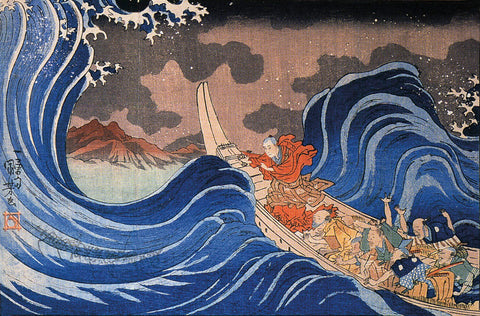Utagawa Kuniyoshi (b Edo, 1797; d Edo, 1861) was a Painter, woodblock print designer and book illustrator. He was born into the urban artisan class of Edo (Edokko), the son of a silk dyer. As a child he showed a flair for drawing.
Biographies mention his boyhood fascination for picture books by KITAO SHIGEMASA and Kitao Masayoshi (1764-1824) and his contact with the works of Katsukawa Shun'ei (see KATSUKAWA, (3)) and Katsukawa Shuntei (1770-1820). Kuniyoshi's formal training took place from 1811 to 1814, when he was apprenticed to (2) Toyokuni I, from whom he learnt the Utagawa style of yakushae ('pictures of actors') and bijinga ('pictures of beautiful women'). Kuniyoshi launched his career in 1814 with the illustrations of Gobuji Chushingura (e.g. Tokyo, N. Diet Lib.). Single-sheet actor prints followed in 1815, and his first triptych was published in 1818. His early work is indistinguishable from that of Toyokuni's other students, who included (5) Kunisada I and ANDO HIROSHIGE. He achieved a professional breakthrough in 1827 with the publication of the first five designs for the series Tsuzoku Suikoden goketsu hyakuhachinin no hitori ('The 108 heroes of the popular Suikoden'; 1827; parts in Springfield, MA, Mus. F.A.; see JAPAN, fig. 248). In these dynamic mushae ('pictures of warriors'), Kuniyoshi found his m?tier. His series was inspired by the Japanese translation of the Suikoden (Chin. Shuihu zhuan; 'Tales of the water margin'; late 16th century) by Takizawa Bakin (1767-1848). That serial publication began in 1805 but was halted two years later. Kuniyoshi's polychrome designs show the influence of KATSUSHIKA HOKUSAI's monochrome illustrations for the novel. It may have been due to the popularity of Kuniyoshi's prints that the project was restarted in 1829, with Takai Ranzan as the translator and Hokusai as illustrator.




